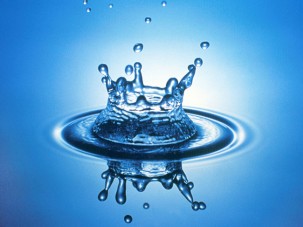This article originally appeared in the Seattle Times. Written by Richard Seven. Drink water to slake thirst, prevent dehydration and fuel the body. Drink more as you perspire. Seems simple enough.
But how much is enough? And enough for what?
 The questions are complicated and critical for fitness buffs and endurance athletes (especially you older ones). How much you should drink depends on many factors, including your weight, body chemistry, condition, diet, the environment you live in and especially how active you are or plan to be.
The questions are complicated and critical for fitness buffs and endurance athletes (especially you older ones). How much you should drink depends on many factors, including your weight, body chemistry, condition, diet, the environment you live in and especially how active you are or plan to be.
Water constitutes about two-thirds of muscle tissue, 25 percent of fatty tissue and acts within each cell to transport nutrients and dispel waste. It regulates body temperature to allow heat to evaporate from the body in the form of sweat. In one hour of exercise, the body can lose more than a quart of water, depending on air temperature and the intensity of exercise.
Dehydration is serious and something to pay special attention to in summer’s heat. The body breaks down without adequate fluid. Yet, some endurance-event participants drink too much, overwhelming their kidneys and putting themselves at risk for exercise-induced hyponatremia, say experts studying water metabolism disorders. The condition, which is relatively rare, is caused by losing significant levels of sodium in a short period of time.
Generally, a healthy person needs to be dehydrated in the range of 4-6 percent loss of body water before there’s a significant health risk from dehydration.
“The public’s impression of the amount of water that is necessary to drink for good health is not based on real factual data,” says Dr. Joseph Verbalis of the Department of Medicine at Georgetown University Medical Center. “Many in our society have promoted the idea that you need to continually drink a large amount of fluid, such as 8 ounces of water eight times a day. But most people don’t really need that much.”
The panel also suggests waiting for thirst to refuel, which is at odds with what many trainers and sports physiologists have advocated, who point out that the body’s ability to detect thirst seems to wane with age.
Still, the American College of Sports Medicine and USA Track & Field have come to agree that thirst is an appropriate guide. That means drink when you feel your body asks for it and stop when you feel sated.
Experts recommend:
USA Track & Field recommends consuming 17 to 20 ounces of water or sports drinks two to three hours before exercise, and 10 to 12 ounces of water or sports drink within 10 minutes of beginning. Don’t forget to drink water afterward to restore hydration, and consume carbohydrates to replenish glycogen stores.
Experts urge exercisers to pay attention to the weather. The risk of heat stroke grows when it is hot and humid. Slower athletes engaging in long-distance events such as a marathon on a cool day are at greatest risk of hyponatremia and overhydration.
With the flood of water products – and the torrent of advertising that accompanies them – you also might consider what kind of water or even brand you want or need. There is purified, fortified, enhanced, flavored waters and more. Some promise extra shots of sodium or vitamins or energy in your water. Bottled water has nudged past milk to become the second most-consumed commercial beverage in the country (behind soda) and is growing at about 9 percent a year.
All these versions of water have skeptics – and those include environmentalists who wonder about the need for more plastic bottles in the world. A number of experts urge people to save their money and stick to tap water whenever possible. A diet of fresh foods such as fruit also helps your hydration levels, they add.
But if you’re set on bottled water, read the label, as with any other nutritional product.
“If you’re talking about plain bottled water, no brand is better than another,” says Cedric Bryant, chief science officer for the American Council of Exercise. “Simply choose the type that tastes best to you. If you’re considering the various ‘fitness waters’ available, your drink should contain 50-150 mg of sodium, 10-100 mg of potassium and ideally less than 10 calories per 8 ounces. Select the flavor you find the tastiest.”